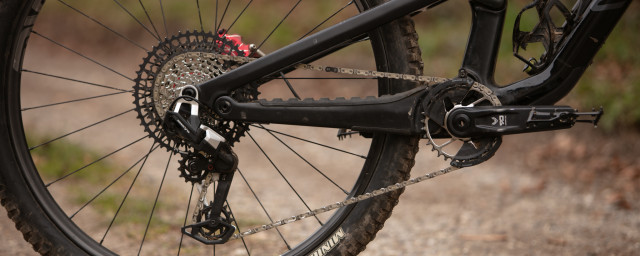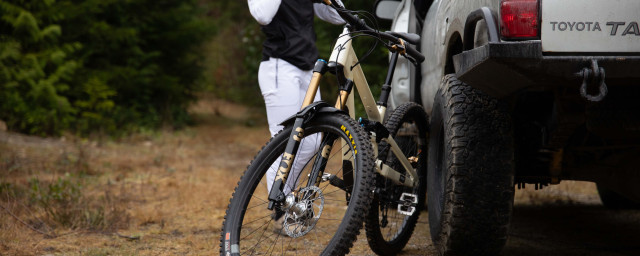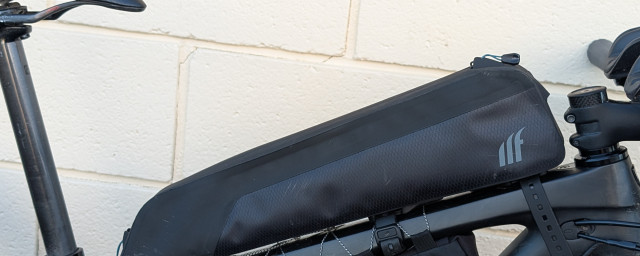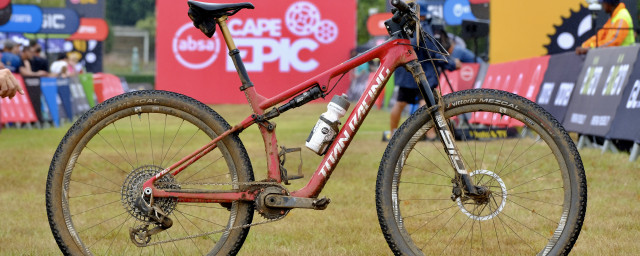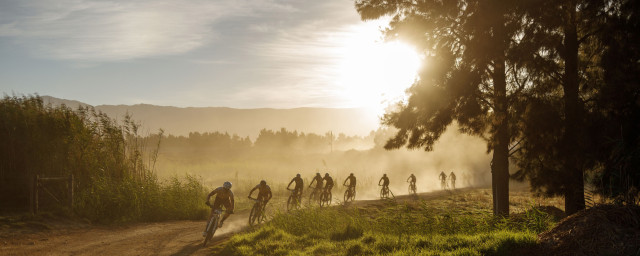Women’s saddle guide - how to choose the best women's saddle

The bicycle saddle is perhaps the most important component of comfort on the bike. It’s one of the three contact points on your bike, in addition to your handlebars and pedals. Get it wrong, and every ride can be agony, and get it right, and you won’t even notice its existence.
In recent years women’s saddle comfort has become a more publicly talked about topic, with even pro riders revealing the discomfort they’ve gone through because of ill-fitting saddles. Whereas pros don’t always have a choice in what saddle they ride because of sponsorship, regular, recreational riders are in a better position as we can literally choose any saddle - purely based on how well it suits our riding style.
For example, one saddle brand's women-specific saddles came about because their ambassador Ali Tetrick demanded that they improve their product. She was experiencing extreme discomfort from spending a lot of hours in the saddle, and eventually underwent labiaplasty in order to ride her bike enjoyably. While not the only one to experience this, Ali was the one who raised her hand and said, “this is not okay".
It's important we talk about women's saddle comfort and to make navigating the saddle-choosing process a little smoother, we’ve talked to industry experts about aspects of women’s saddle comfort and whether you actually need a women-specific bike saddle.
Should you choose a women-specific cycling saddle?
It can be overwhelming to try to find a saddle that suits you because there are literally hundreds of different models on the market. Some of them are labelled as women-specific, and some come without any gender association.
So should you look for one that says ‘women’ in the product name? Not necessarily.
“It is not 100% necessary that all women should ride a “women’s specific” saddle (or that men cannot ride a “women’s specific” saddle). Specialized does not currently make any saddles that are specific to gender and yet we make products that suit all riders. There is a difference between labelling a saddle as either “men” or “women” and designing a product that is heavily tested with a particular group of riders. Arguably two of our most popular franchises “Mimic” and “Power” are widely liked by all of the riders but were both heavily tested and designed with women,” Emma Boutcher, Saddle Product Manager at Specialized says.
Like with cycling shoes, brands are increasingly doing exactly what Boutcher says and leaving gender out of the labelling. But that doesn’t remove the fact that certain saddles have been designed with the female anatomy in mind - such as all of the Liv saddles - while others have a more general approach.
There is no getting around the anatomical differences between men and women, as Liv’s Ashley McElroy says: “Men’s and women’s pelvises are different in two ways. First, in most cases, women have wider sit bones. Second, men tend to have a more V-shaped pubic arch, while women have a more U-shaped pubic arch. Based on this, Liv’s saddles are designed to offer the best support, fit and comfort for women. Liv’s saddles are wider and flatter than a “unisex” saddle specifically to accommodate most women’s body structure. Because men and women have distinct differences in pelvic structure, it’s difficult to accommodate the difference in sit bones and pubic arch in a unisex offering.”
Having ‘women’ in the product name might also help consumers find the right product, as most women looking for a new saddle naturally search for “the best saddles for women”, instead of “the best saddles”.
Brands such as Specialized and Fizik have steered away from the gender label and focus on emphasising that saddle choice is always an individual matter. Saddles that were initially designed based on women’s data have now found users among all genders, such as the Specialized Mimic.
Specialized's Boutcher shared the story of Ali Tetrick, which was the spark for the brand to develop women's saddles.
“When we launched the MIMIC saddle back in 2018, it was labelled as a women’s specific saddle. We did this to point out the fact that we created a saddle that was designed and tested to solve a unique problem that women face.
"Ali was paramount in the testing and development of this saddle as part of a 20-woman group. The product development team at the time went through many rounds of prototyping and testing, experimenting with different densities of foam to find the optimal balance of firm and soft foam."
Women’s saddle features
Saddles come in many different shapes and sizes, some with a cutout - which means that as the name suggests, some of the material has been cut out in the middle - some have a pressure relief channel of a different kind. Some saddles are more “traditional” and are rather made as one solid unit, without any cutouts or pressure relief channels.
“For a long time, it was thought that cutout saddles addressed the issue of numbness and pressure. This pressure results in the constriction of blood flow (ischemia). By removing the center channel in the saddle it solved for ischemia but introduced a new issue of blood pooling, which causes swelling, known as edema. MIMIC seeks to solve for both of these issues by creating a saddle with a softer nose and what we call a “supportive cutout," Boutcher explains.
Fizik's Locatelli also highlights that while a cutout is an option to relieve discomfort, it greatly alters the pressure that the rider places around it. "Cutout has the option to relieve pressure. But not everyone is on the same page. Professional riders don't look at the cutout in the same way as we do. They are reluctant to change, so they won't take a cutout saddle even when you can show the benefits in pressure mapping. So better not look at what pro riders are doing.
"The cutout is not necessarily the most important part of the saddle design. When you remove part of the saddle, you remove some surface area. This means that pressure is concentrated more. So the cutout needs to be ergonomic and the surrounding area needs to be well thought out," Locatelli explains.
All experts agreed though, that a cutout is not necessarily "better" by default. Many riders still prefer the more traditional, solid saddle.
Finding the right saddle - size and shape
In order for the saddle to fit out, it needs to be the right size and fit your riding style.
Even though you can quite accurately measure the width of your sit bones, there are more aspects to consider. The overall anatomy of the cyclist, their riding style and position and also, preference.
“Right now, there isn’t a catch-all device that can tell you the exact saddle (size, shape, padding) based on your riding style and anatomy. If there were, my job would be a lot simpler,” Boutcher summarises.
Fizik’s Alex Locatelli shares the sentiment and says that there is often a demand from retailers for him to design a saddle that “solves all problems”.
In terms of widths, saddles come in a wide range and with different increments between each size depending on the brand. The saddle width is the main measurement you need to get right to ensure your seat bones have enough support. But if you go too wide, you will also cause issues.
A little less complicated matter is the shape of the saddle. Generally, saddles can be split into two rough categories: flat and waved.
The benefit of a waved saddle is the added support, making it an ideal choice if you are a beginner and might not have developed great stability - and core strength - yet.
Professional riders prefer flat and stiff saddles with thin padding, as these offer a greater power transfer. They do require a lot more core strength for the right position, so if you do go for a flat design, make sure you keep up your core training alongside.
When looking from above, saddles can be called T or V-shaped. A T-shaped saddle has a more pronounced difference between the nose and the seating area of the saddle, giving more space for thighs.
A V-shaped saddle has a gradual shift in the width towards the nose of the saddle, meaning you can shift sitting further back or front easily.
The right saddle for the right bike - consider your riding discipline and bike geometry
Not only is there the choice of the right saddle for the right rider, but different bikes also call for a different saddle. For example, different mountain biking disciplines require very different saddle qualities. In cross-country mountain biking most riders prefer a road saddle, whereas trail riders go for cutout saddles more.
Locatelli explained that the geometry of each bike is very different and affects the position This means different body parts are touching the saddle - think of a TT bike versus a downhill mountain bike - so hence the saddle requirements are different. The intensity of the riding is also a factor.
"Same bicycle with different power output will create a different result in pressure mapping. The more power you have the less pressure you create on the saddle. The harder you are pushing the more comfortable any saddle is."
Enduro and downhill mountain bike riding require less time on the saddle, and in both disciplines, the saddle can actually work as a steering mechanism in addition to being a seat, Locatelli says.
The saddle rails on mountain bike saddles need to also accommodate a possible dropper post -
If you’re a gravel rider, a road-orientated saddle is likely going to be a good choice - and you can further improve the comfort by choosing less or more padding, depending on your style; if you race, a stiffer saddle offers more power, and if you rather do social rides on canal towpaths, a padded, more supportive wave-shaped saddle might be a better option.
Trial and error - adjusting to a saddle
Once you’ve done your research; you’ve measured your sit bone width and your current saddle and figured out what your riding position is, it’s time to go shopping.
It goes without saying that you should test multiple saddles before you stick to one - and you need to test them long enough.
“It takes about three to four weeks to adapt to a saddle,” Fizik’s Locatelli says. That is why you cannot really judge if a saddle is right for you after one week of riding it. Many saddle retailers offer a saddle guarantee - usually 30 days - so that you can test a saddle worry-free and not end up paying for something that doesn’t suit your bum at all.
Saddle comfort beyond the saddle
Locatelli highlights that even if you have the right saddle size and shape, a big part of saddle comfort comes from having the right pair of padded shorts, with a chamois that is anatomically the best for the individual. The best women’s bib shorts have been designed specifically with women’s anatomy in mind, and they are a necessary investment if you wish to ride multiple hours on the bike.
Another aspect of saddle comfort is reducing friction. Chamois cream is great for that, as it helps to keep your skin happy by reducing friction and being antibacterial. There are many chamois creams that have a female-specific PH level so that they won’t result in any unwanted itchiness after a long day in the bibs. And remember to be generous with the cream - always apply more than you think you need and never double dip.
There has also been a reasonable amount of talk about whether you should trim away hair around the bikini area - many suggest not, and if you do, at least don’t shave but rather wax. After all, the hair is there for a reason and removing it will irritate the skin.
Saddle comfort might seem impossible to achieve, but really once you know what different saddles offer and how they suit your individual needs and riding style, you will almost certainly find that there is more than one saddle that is “the one” for you.








